New Chronoswiss SkelTec And Opus Chronograph: Contemporary Skeletonizing Bares All
by Anders Modig
You could easily mistake the Chronoswiss SkelTec for the crescendo of a horological striptease revealing sensually ticking mechanics. And you would be forgiven for doing so, since for 250 years the art of skeletonizing has featured the art of cutting away the excess and revealing the essential.
But in this case (pun intended) the maximum reduction was cut on the drawing board rather than after the parts were made. The result? A modern, mechanical, bare-all, matte-sandblasted movement heralding the future of skeletonizing.
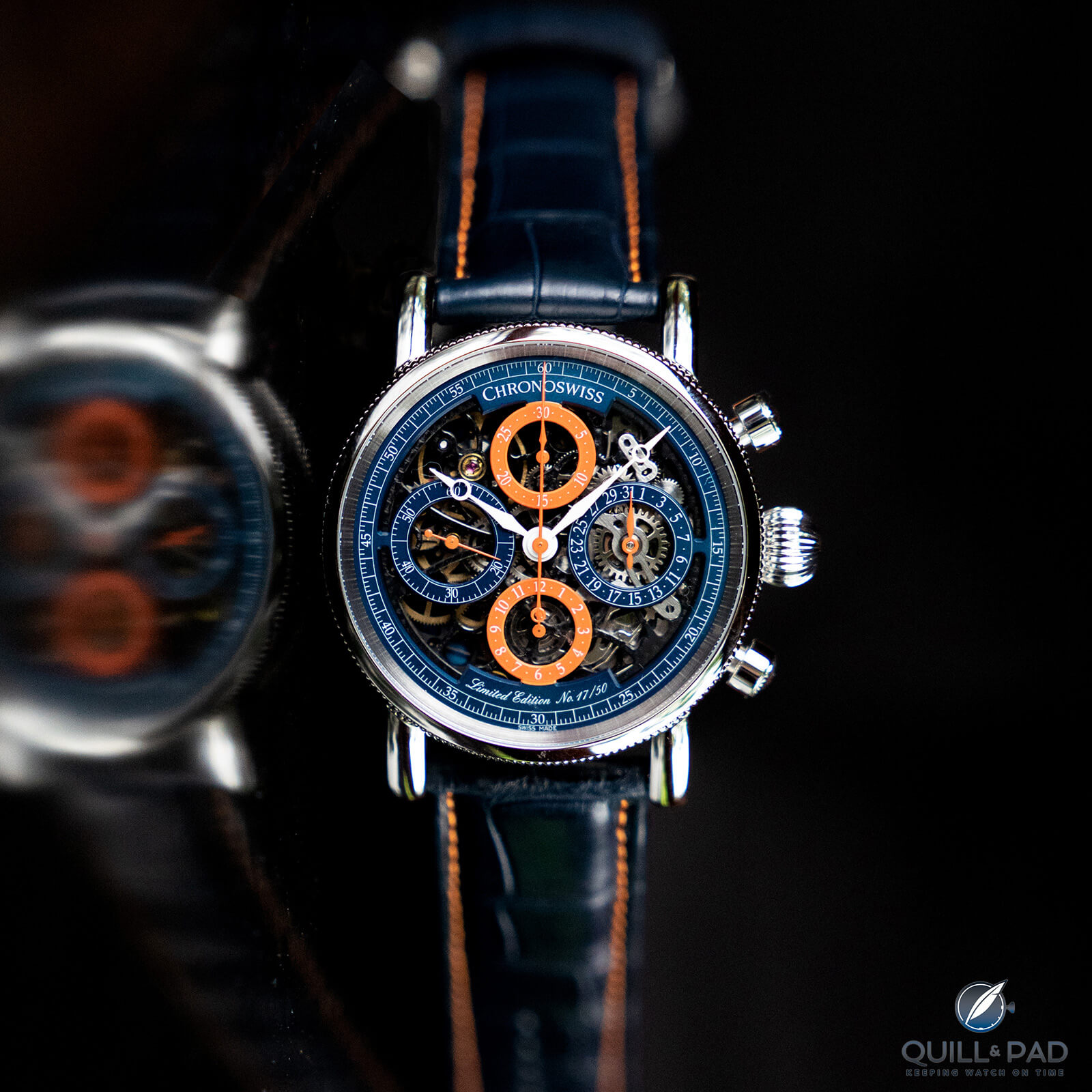
Chronoswiss Opus Chronograph limited edition (photo Anders Modig)
But before we dive further into the SkelTec, let’s look at the Opus Chronograph – a Chronoswiss evergreen. Originally released back in 1995, this chronograph accelerated Chronoswiss down the path of skeletonization and began a new era.
Upgraded Chronoswiss Opus Chronograph for 2020
The movement of the Opus is produced by Arola Alfred Rochat & Fils in Le Lieu, Switzerland.
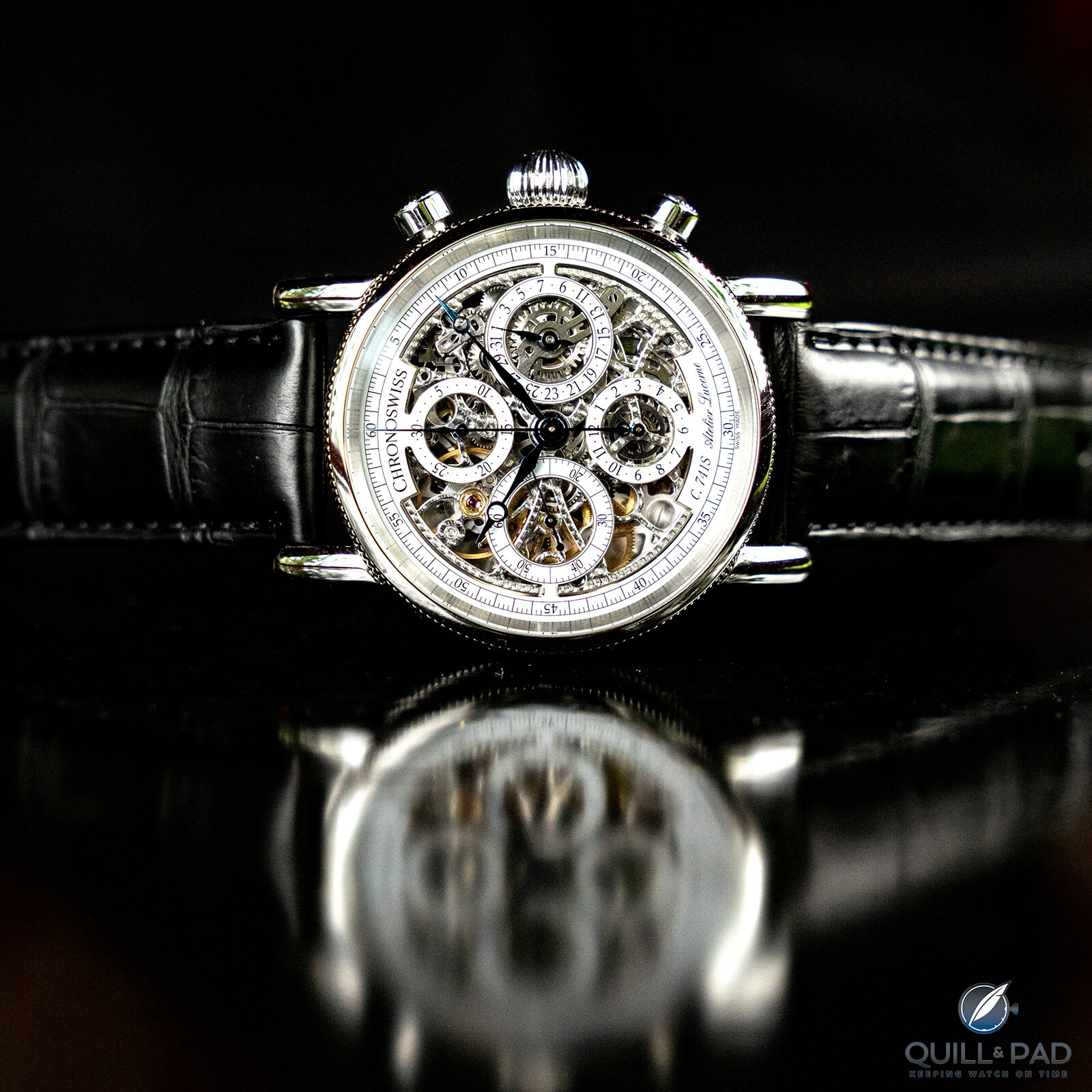
Chronoswiss Opus Chronograph 2020 (photo Anders Modig)
Using a pantograph, movement supplier Alfred Rochat, whose main building overlooks Lac de Joux, has been machine skeletonizing the ETA Valjoux 7750 for Chronoswiss since 1995, which the brand calls Caliber C.741 S.
A pantograph uses a steel finger to follow a pattern on a large drawing while a mechanical arm guides the tool that mills the small movement components, in essence skeletonizing them. This machine-paring of all superfluous material leaves nothing but a filigreed skeleton, which functions as well as if fully fleshed.
After the initial milling, the components undergo further beauty treatments: polishing, machine anglage, perlage, and a subtle Geneva stripe on the skeletonized part of the rotor. The heavy metal part of the rotor also used to have Geneva stripes, but following the trend of today’s love of varying textures this is now vertically brushed.

Faces of 2020: Chronoswiss Opus Chronograph and Opus Chronograph limited edition (photo Anders Modig)
Unlike most 7750 chronographs with date, the movement powering the Opus does not use a larger date ring circumnavigating the entire movement, which generally shows up on the dial in a window. Instead, the date function is in a subdial at 3 o’clock.
Head of design Maik Panziera explains why. “With four subdials our founder Gerd-Rüdiger Lang achieved a balance in the design. Even though my designs are very different from those of our founder, we do have that strive for balance in common.”
So what makes this updated 35-year-old masterpiece now fit for the twenty-first century?
“The 23-part case now offers a new geometry in a 41-millimeter case unlike the original 38 mm. The visuals are also different since the knurls on the upper and lower part of the case are now parallel. On top of that, the lugs have been shortened, thus the whole watch hugs the wrist more comfortably, regardless of wrist size. You will also see the skeletonizing clearer than ever before as the sapphire crystal, which used to have a one-sided anti-reflection treatment, now has anti-reflection treatment on both sides. And in line with contemporary user-friendly needs and expectations, water tightness has been upgraded from 3 atmospheres to 10 atmospheres,” answered Panziera.

Chronoswiss Opus Chronograph in its limited edition colors (photo Anders Modig)
What I really like is the limited edition (50 pieces) with a more-is-more attitude. Here, the subdials showing date, chronograph hours, minutes, and small seconds are lacquered in poppy blue and bright orange tones.
While the current retail price of $11,500 for the unlimited Opus model seems like quite a jump from the U.S. price of $7,500 back in 1996 when this watch was awarded Watch of the Year by German publication Armbanduhren, the price is actually around the same after adjusting for inflation. (Note that the domestic German price for that watch in that year was quite different.)
Chronoswiss SkelTec with brand-new movement
Let’s now dive into the SkelTec – which fits comfortably into 2020’s still-strong trend of contemporary skeletonizing.
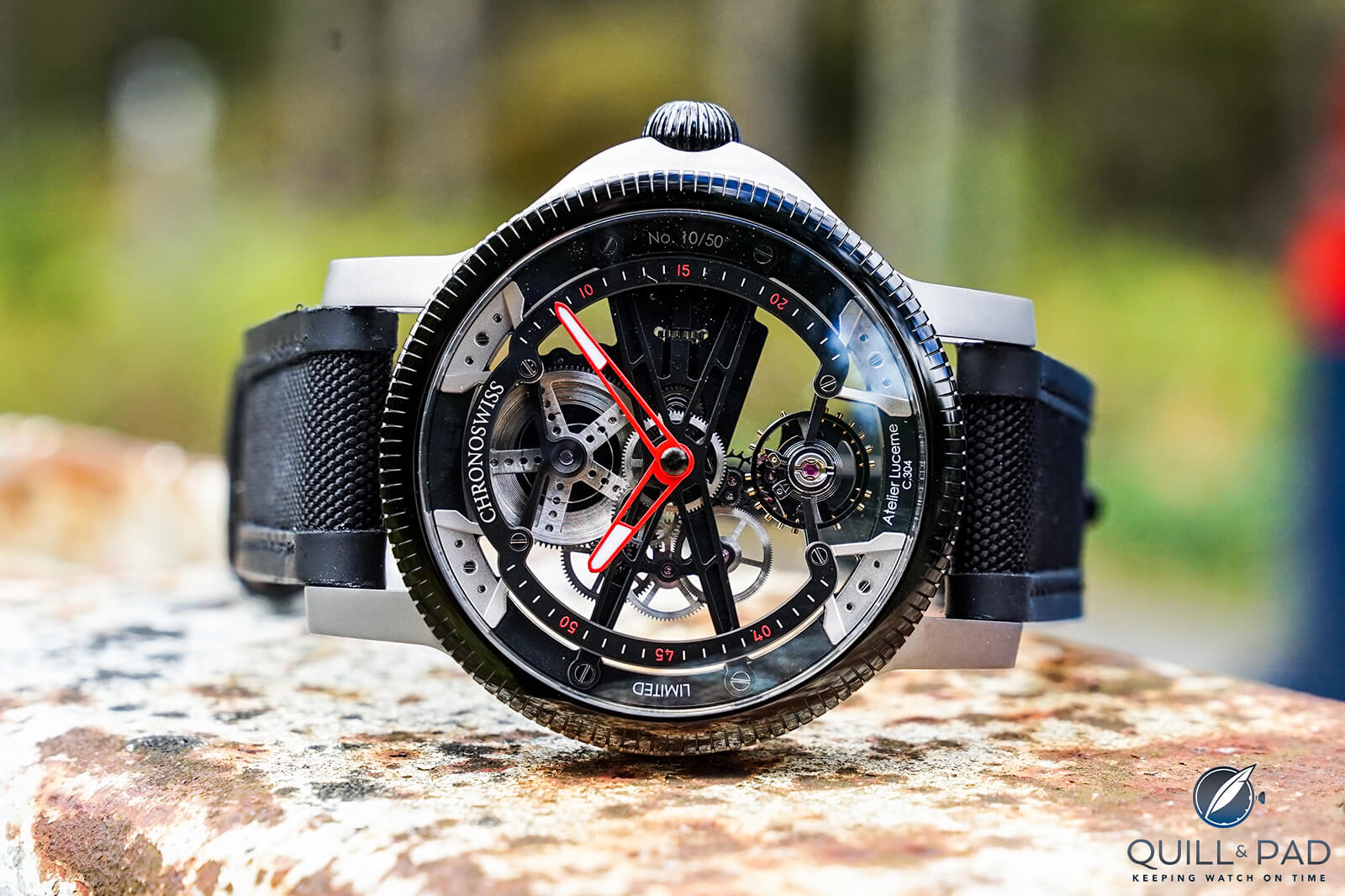
Chronoswiss SkelTec (photo Anders Modig)
“This 166-part movement with a 48-hour power reserve was designed from scratch by Chronoswiss and manufactured exclusively for Chronoswiss by Concepto. It combines the Opus model’s mechanical spirit with space-age technologies – you could say that the SkelTec takes artisanal, traditional skeletonizing to warp speed,” said Panziera, who collaborated with award-winning Ruma-Design on the SkelTec.
“The progressive design of the SkelTec consistently applies the idea of maximum reduction and clarity to the entire movement,” said Ruben Velasco, co-founder of Ruma-Design, a company experienced in designing high-end sports cars.
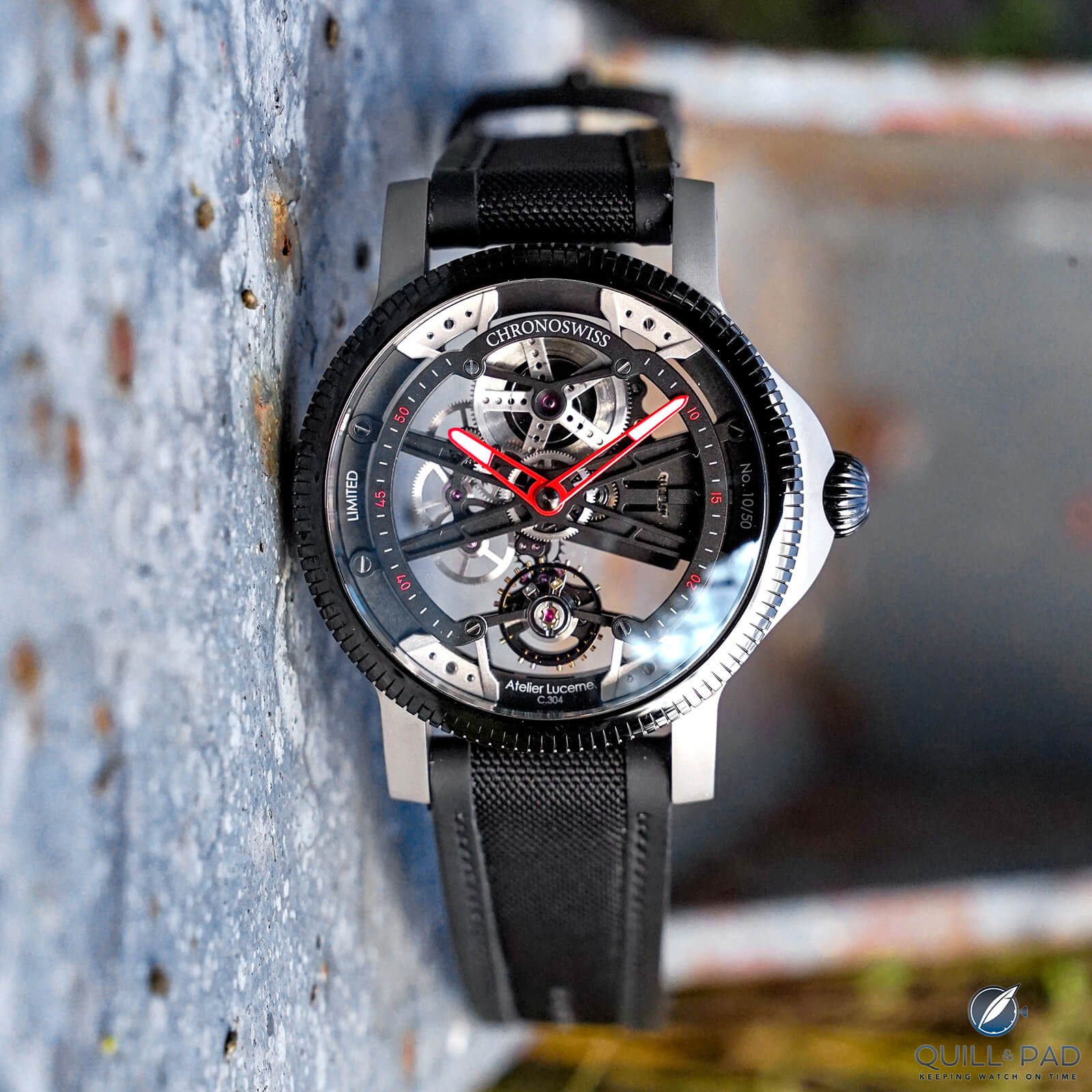
Chronoswiss SkelTec (photo Anders Modig)
“Its three-dimensional technical structure is anchored on an iconic X-shape surrounded by a matte black halo clearly indicating the minutes. This is held in place by the perimeter triangles placed at 11, 1, 5, and 7.”
The SkelTec’s case design is equally radical, employing Class A surfaces, a term used in the car industry for curvature and unique, free-flowing forms. This reflects the fluidity of time itself, whose growing radius is seen in the sculptural curve extending from the oignon-shaped crown to the sensually hollowed-out lugs.
“With these revolutionary elements together, the overall look is delicate yet bulletproof, while maintaining Chronoswiss signifiers like the knurled bezel and the onion crown,” Velasco added.
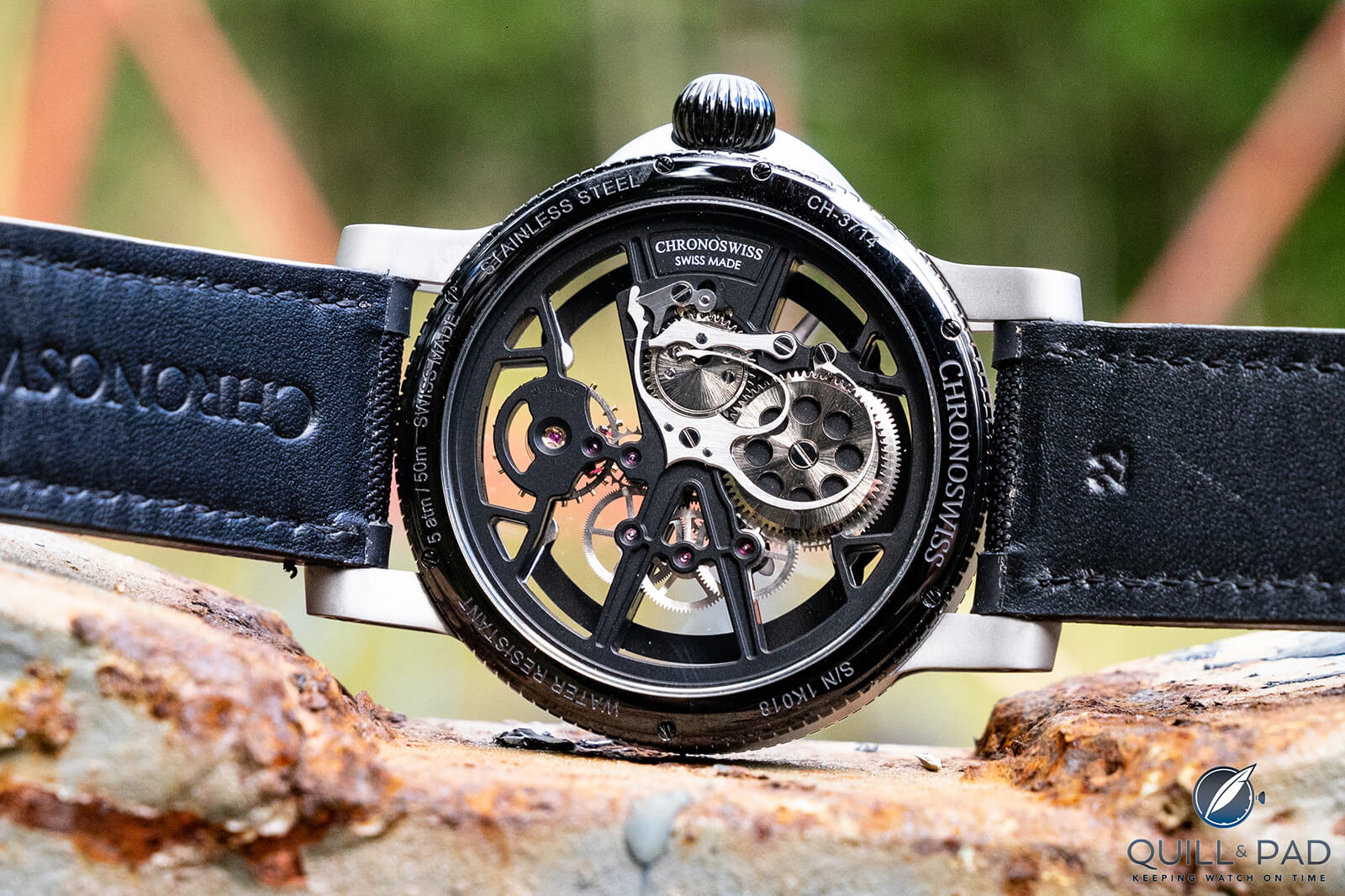
Back of the Chronoswiss SkelTec (photo Anders Modig)
“The instantly recognizable Class A surface case and lug design was a challenge,” admitted Panziera. “In the car industry you can realize Class A surface designs by injection molding of aluminum. If you were to try that with stainless steel you get a surface with microscopic holes, which we could not accept. We eventually resolved this issue by adapting the conceptual single-part design into a five-part case . . . and those parts are truly pushing the limits for a five-axis CNC machine.”

Chronoswiss Opus Chronograph limited edition (photo Anders Modig)
Unusual collaboration
Oliver Ebstein, owner and director of Chronoswiss, also revealed something unusual about the SkelTec’s origin. “The blockchainers of Swissblock Capital contacted me with the idea of a next-generation watch. Constantly living on the cutting edge of technology, they wanted to co-create something fundamentally human in an industry with values proven over time. Together we were able to combine the mechanical spirit and essential values of watchmaking with space age technologies,” said Ebstein.
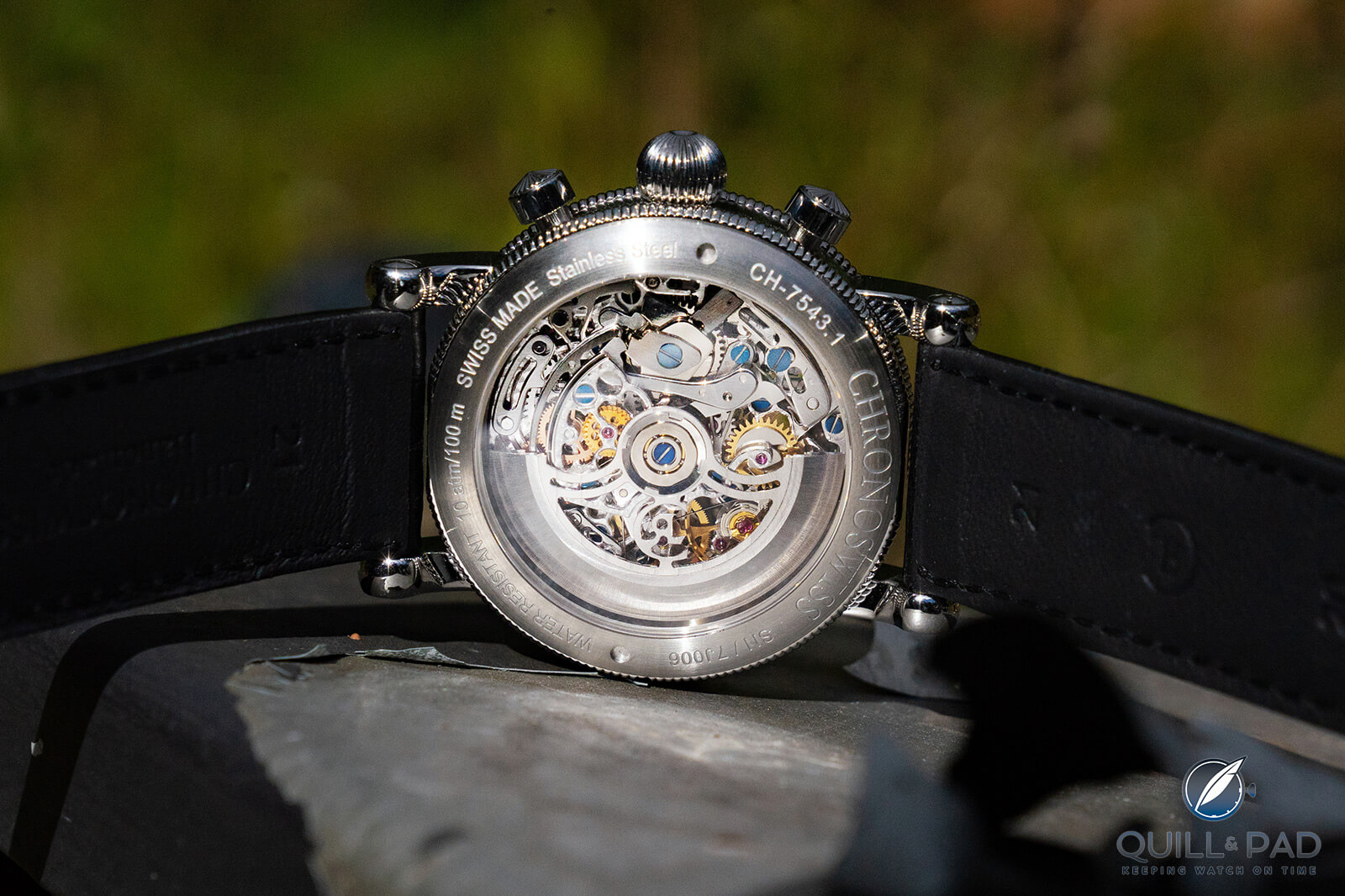
Back of the Chronoswiss Opus Chronograph 2020 (photo Anders Modig)
Jan Happel, co-founder of Swissblock Capital explained the initiative behind Chronoswiss’ SkelTec “Throughout every single day we are surrounded by technology; all we see is digital code. That’s why we contacted Chronoswiss with the idea of creating a timeless, high-performance piece of art based on car design and analogue mechanics working with the forces of nature.”
“A watch is something timeless, fundamental, and essential. And Chronoswiss has something in common with crypto currencies. It is not for everyone – its watches are limited in supply, they are for people in the know: for innovators, for pioneers,” added co-founder Yann Allemann, previously an engineer at Ferrari where he made friends with the Ruma-Design duo.
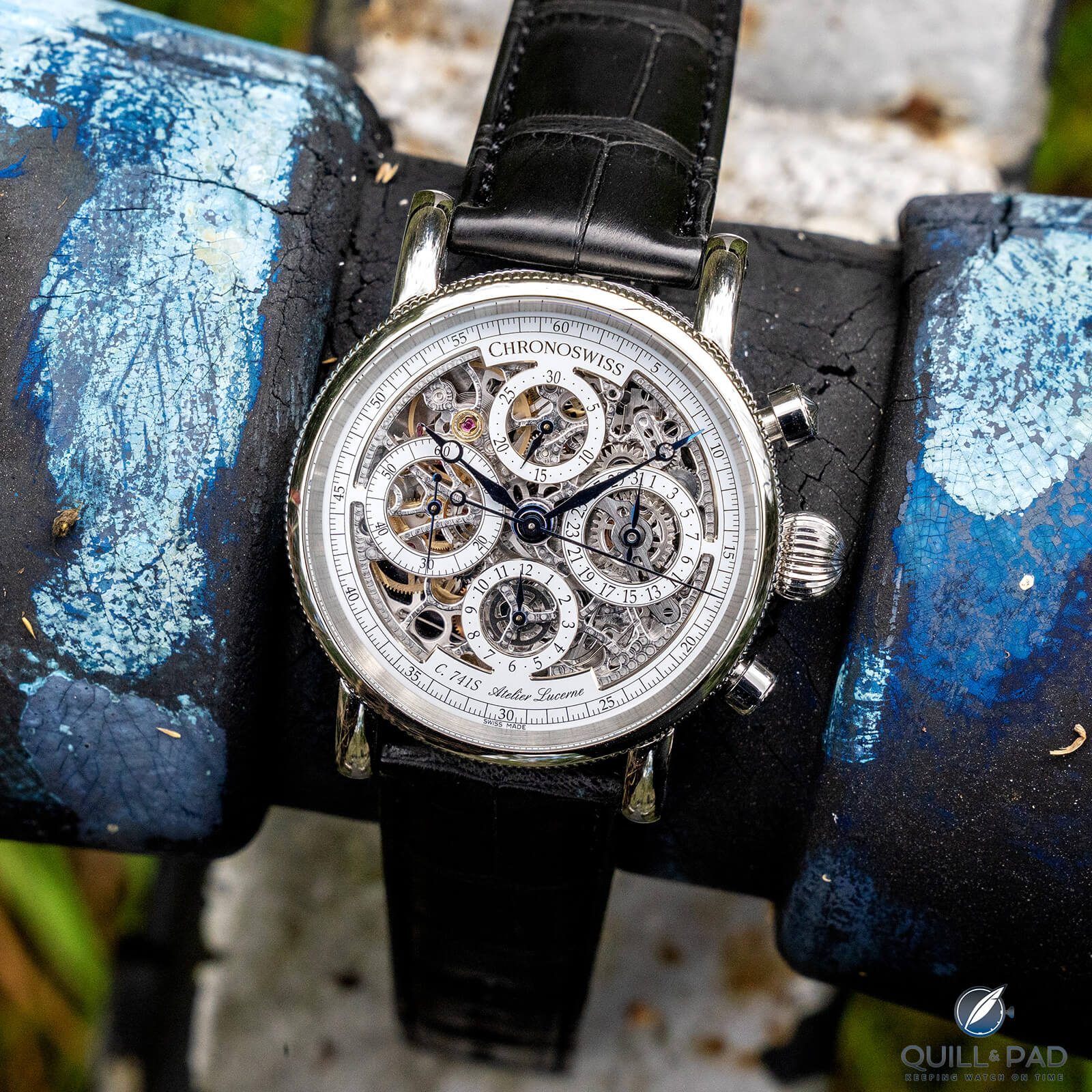
Chronoswiss Opus Chronograph 2020 (photo Anders Modig)
“By working together on the SkelTec we came up with a less-is-more modern mechanical watch where design meets technology – something honest and beautiful for the future that lasts, a watch that is here to stay. Both the SkelTec and the new Opus chronograph really show that Chronoswiss is back on track when it comes to innovation,” Ebstein summed up.
For more information, please visit www.chronoswiss.com/en/EU/product/skeltec and/or www.chronoswiss.com/en/EU/product/opus-chronograph.
Quick Facts Chronoswiss SkelTec
Case: 45 x 15 mm, stainless steel with partial DLC coating or two-tone with 18-karat red gold
Movement: hand-wound Chronoswiss Caliber C.304, produced by Concepto exclusively for Chronoswiss, 48-hour power reserve, 28,800 vph/4 Hz frequency
Functions: hours, minutes
Limitation: 50 pieces of each version
Price: €17,700 (stainless steel); €20,900 (two tone)
Quick Facts Chronoswiss Opus Chronograph 2020
Case: 41 x 14.8 mm, stainless steel
Movement: automatic Caliber C.741S (ETA Valjoux 7750 base), 28,800 vph/4 Hz frequency, 46-hour power reserve
Functions: hours, minutes, small seconds; date, chronograph
Limitation: 50 pieces (blue/orange dial; silver dial version unlimited
Price: €11,900 (blue/orange dial); €11,500 (silver dial)
You may also enjoy:
Chronoswiss Flying Regulator Red Passion Unique Piece For Only Watch 2017: A Matter Of The Heart



Leave a Reply
Want to join the discussion?Feel free to contribute!